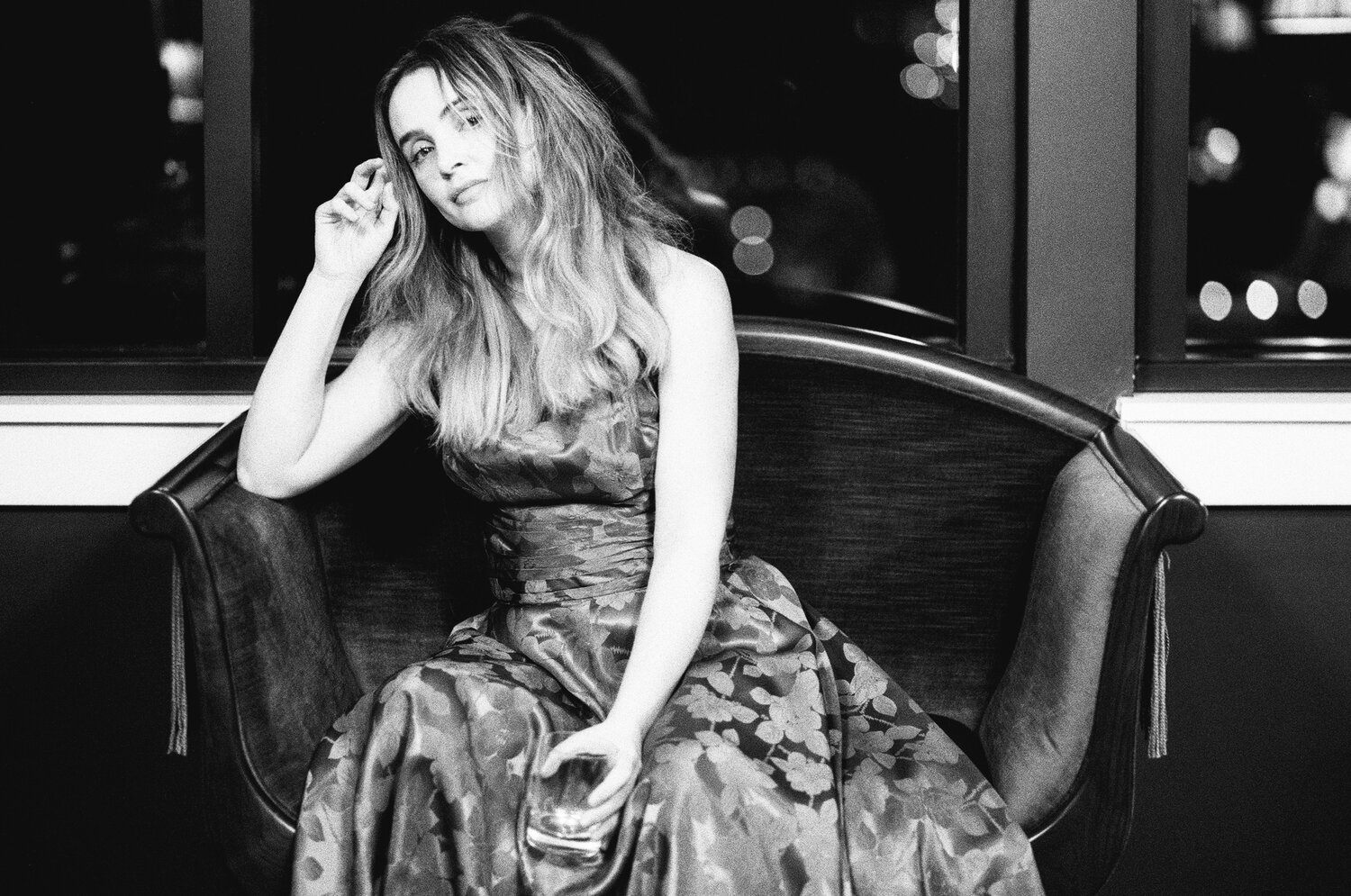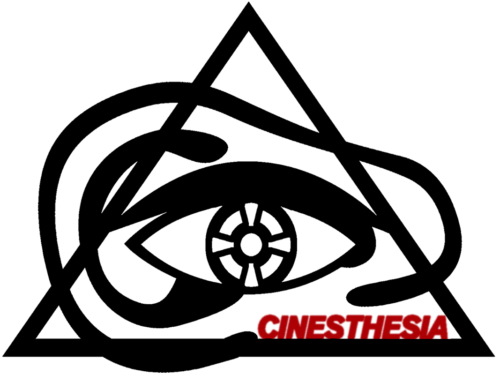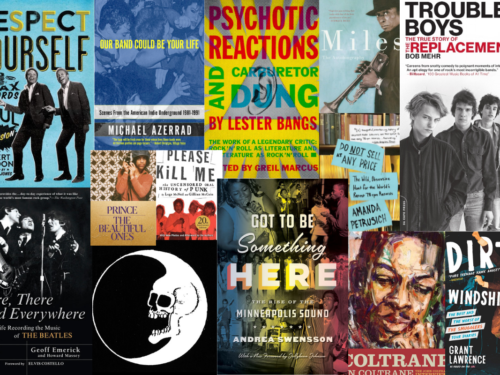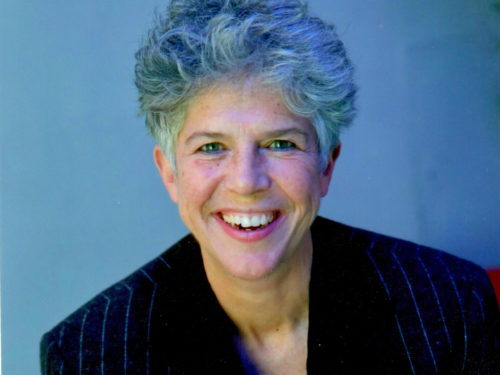Swift discusses reimagining the songs of Bob Dylan, running a record label, and being an artist in the age of social media
Well-versed in the styles of master songwriters of the past and present, Emma Swift is blazing a trail all her own with a unique, contemplative, and wit-imbued twist. A self-described interpreter, Swift is an Australian singer-songwriter with a rich career in music ranging from radio broadcasting to her current role as a musician and the manager of Tiny Ghost Records.
Swift released her 2020 album Blonde On the Tracks, a record of Bob Dylan covers, to critical acclaim. This month, she embarks on a small tour accompanied by her partner, Robyn Hitchcock. Swift and Hitchcock also host regular live concert streams from their home, featuring their cats, Tubby and Ringo. Currently, Swift is also working on her first original album, Beautiful Ruins. In a Zoom interview, we discussed Swift’s approach to music as a creator and interpreter, Blonde On the Tracks and Bob Dylan, and managing critical success and social media.
Split Tooth Media: Blonde On the Tracks has been such a huge success for you, but you also write a lot of your own music, of course. In your single “The Soft Apocalypse” you blend really intimate imagery with a broader view of the world. How do you strike that balance in the scope of your songwriting, and do you have a particular process that you follow when you sit down to write a song?
Emma Swift: I don’t know that I have a real process so much as I’m very much from the confessional school of poetry, and often my songs are born out of ideas that I just write in the Notes app on my phone. They start as a feeling, and then they flesh themselves out over time. I’m not in any way a prolific songwriter, and I am someone who edits things over and over and over again. I definitely overthink things too much. But I have surrendered to that as my style (laughs). “The Soft Apocalypse” song that’s online at the moment was born out of the pandemic era, and I very much wanted to reflect on the way that I was feeling at that moment in time but also tie it in more broadly to how I felt spiritually as a person and how I felt about living in Nashville, Tennessee. It was a very odd period in my life. Just before the pandemic struck there was a huge tornado that swept through my neighborhood. So even as we went into lockdown, Nashville even looked really weird. It looked like a war zone. It looked very different from the Nashville that I’d known for the 10 years that I’ve lived there so I wanted to capture that.
It’s funny because I’ve got a bunch of songs I wrote before that song that I’m recording at the moment that will come out on my [next] album, but because that particular song felt so of the time and place, I put it out as a single — which is not usually how I work — but I put it out as a single because I knew that if I tried to record that song now, it would have expired for me emotionally. If I tried to record that next week I’d be like, ‘nah.’ So that one is almost like a diary entry. It’s about as pure as it gets.
It’s a beautiful song.
Thanks! In terms of the influences for that song, I would say that the biggest one is Judee Sill because I really love her songs and I’m not — I was raised Catholic, I’m the eldest of seven children, but I’m not a practicing Catholic. I don’t consider myself a believer in a ‘capital-G God,’ and I think that that song is kind of a reckoning with my own spirituality and what that might mean living in the South where it’s like the Bible Belt, too (laughs).
Do you find that your more ‘of-the-moment’ songs take on new meaning for you now that you’re coming back to them in some way?
Absolutely. But I think we’re all kind of made up of patterns. So sometimes you think you’re writing about one thing and then it can completely apply to a different scenario at a different time in life and, to me, that might be the reassurance I probably need to go ahead with a song. If I can still stand by a song that I wrote four years ago — I mean, the album is called Beautiful Ruins. I really wanted to record it three years ago but, with the way the pandemic turned out, I wound up spending the money I saved to make the record on rent (laughs). For a while I didn’t have the material to record and that was a problem, and then, when I did have the material to record, I didn’t have the means to record it. But the best songs remain resonant. Sometimes, it’s so weird. You think you’re writing about a lover and then you’re like, ‘Oh no, that song’s about my mom!’ (Laughs) Feelings shape-shift over time.
You have a lot of radio experience as well from your shows “In the Pines” to “Saturday Night Country” so you have definitely made a career out of music curation. Do you think that has shaped the way that you designed the tracklist for Blonde On the Tracks?
No one has ever asked me that before and I think that’s a really interesting question. I do have a curatorial streak in my vein, and I don’t know that I would ever host a radio show again, but certainly I spent all of my twenties curating radio and I was very passionate about it and very dedicated. And when I went to put together Blonde On the Tracks — for one, it’s all Bob Dylan songs and not just me cherry picking the songs of my favorite artists. It’s not like, ‘Here’s a Dylan song, here’s a Joni Mitchell song, and here’s a song by The Smiths.’ It’s very much a hyper-focused project. And then on top of that, it’s very much these Dylan songs that I felt that I could swim in, for want of a better term. I wanted to make an album that sounded like my life, which is why all the songs that I chose are very first person, very direct. Dylan writes so many brilliant storytelling songs, like “Hurricane,” but I’m not doing any of those stories. I’m trying to do the songs that most sound like they could almost be a journal, because that’s what I wanted to do. I wanted to tell the story of how I was feeling at that time through these Bob Dylan songs.
To that end, and with the personal and journal-like songs as the focus, I’m sure it was a daunting task to pick songs from a catalog as big as Bob Dylan’s. Were there any that just missed the cut?
Yeah. Certainly “Sweetheart Like You.” I have spoken about my love for that song a lot and at the time of recording. I just couldn’t sing it right. I think I’ve got it down now, but at the time I didn’t, so that didn’t make it. I’ve been playing “Visions of Johanna” a lot live and I think I was so infatuated with that song that it was just too intimidating for me to try and record. But also, it’s a very long song. The first track I chose to make, in my very stubborn way, was “Sad Eyed Lady of the Lowlands.” And I mean, once you’ve decided to sing “Sad Eyed Lady of the Lowlands” there’s not that much room for another song that goes over seven minutes (laughs). So I guess if I did it all again, perhaps I’d do it a little differently. I didn’t know how it was going to work as an experiment. It’s easier to get people to chime with something that goes for three-and-a-half minutes than to carry people through something that goes for about eight.
That’s very fair.
Even though Bob Dylan is king of the long song — and I love his long songs because, to me, they’re like incantations, and I just get completely in the zone of what they are — I will say that playing the songs live, it’s like delivering a Shakespearean monologue when you get into that zone, so it’s nice to have some respite from that.
I feel like I’d forget the words after a while so kudos to you on that.
It’s funny. Before each gig, I have to kind of do this thing of, ‘OK, I’m gonna run through every single song in my head and I’m gonna make sure I get it.’ And then sometimes, sometimes I’ll reverse lyrics and I’ll be like, ‘Dang it!’ but mostly — mostly — I pull it off.
It’s difficult though because when you play your own show and you fuck up the lyrics to your own song, no one cares. If you’re playing a whole set dedicated to Dylan songs to an audience that is also a dedicated Dylan listenership, they know when you’ve fucked it up (laughs).
You’ve listed a lot of different influences on your music, not only Bob Dylan, but Joni Mitchell, Linda Ronstadt, etc. How do you see yourself fitting in this continuing tradition of singer-songwriter/storytellers?
I’m still trying to work out where I fit and I think that I always thought of myself as an interpreter, and that was a very uncool thing to be in the 2000s. In the ’70s, I mean you have Emmylou Harris, Linda Ronstadt, Joan Baez, and Sandy Denny — those singers interpreting songs that other people had written. That was kind of normal, celebrated. By the time the 2000s rolled around it was like, ‘Why would you play these covers?’ And there wasn’t really a distinction between interpreting a song and being in a cover band, which I found pretty hard, and I think is why it took me so long to even create music for myself. And then I got to a point where I just got over it and was like, ‘Just do it!’ (Laughs) So now I don’t know. I’m trying to work out where I fit in. I do like to write my own songs, but I’m very slow at it. I’ve done a Dylan record, I’ll do my own record next, I’ll probably do another covers record after that, then I’ll do my own record next. Like, trying to find a way to swim between both worlds.
Do you have a shortlist of groups or artists you have in mind for another cover album?
Yeah, absolutely. Leonard Cohen, Lou Reed, The Smiths, Radiohead. And it sounds like a cock forest and I don’t mean for it to be that way. It’s not because I don’t like women songwriters. I love women songwriters, as a woman songwriter. It’s because I find it easier as an interpreter to give a twist, or to change, or shapeshift the meaning of a song that has been presented previously by a man. So I love Joni Mitchell, and Judee Sill, and Judy Collins — there’s so many greats — Tori Amos, Kate Bush. But there’s nothing I feel I could bring [to their songs]. If I wanted to hear a woman singing PJ Harvey songs, I would just listen to PJ Harvey sing a PJ Harvey song. So that’s why.
Your version of “Queen Jane Approximately” ranked very high on Rolling Stone’s list of 80 all-time great Dylan covers. How did that feel?
Ridiculous. I don’t think I’ve ever felt more just overwhelmed and delighted, but also, like I was living in someone else’s life. And what a fluke! What a great thing for that to happen. So many other people have sung Bob Dylan that if I had thought about how many people had done that before I made that record I just would never have done it. And this album just sat for ages in my Dropbox kind of because of that. I was like, ‘Who needs more Dylan covers? That was a fun experiment.’ And it was only because the pandemic happened and I didn’t have anything else to do that I was like, ‘Oh, I’ll put this out.’ So I guess the main thing with music is: 1) do I like doing it? and 2) does it connect with other listeners? And then the critical acclaim is like a funny dance because you don’t want to take it too personally because they could absolutely think the next thing I do is shitty, two-and-a-half stars. My solo record of my own songs could be on Rolling Stone’s list of ‘Worst Solo Debuts of All Time,’ or ‘Most Disappointing,’ or whatever. So it’s one of those things where you have gratitude, but I can’t get too attached.
We have been talking a lot about you as an interpreter: you’ve done Dylan, you’ve done Neil Young — I was listening to your Big Star cover of “Thirteen” earlier today as well. Do you find that there are any unique challenges in interpreting songs written by someone else, versus the songs you write yourself?
I think interpreting is quite difficult. I love doing it, but for an interpretation to work for me, it has to have the transcendent moment where it becomes your own song. And sometimes if I’m singing a song — like I’ll try a cover on for size and it never reaches that beautiful moment, never gets to that point where I’m like, ‘This is better than a cover, this is a thing I should share with people.’ The curatorial side of me loves part of that digging and that investigation of, ‘Oh, what if I tried playing this song? Does it sound good?’ It’s an interesting process. It’s like going into a changing room in a department store (laughs). Like doing covers and being like ‘OK, I’ve got 20 dresses in here and one of them is going to work, but I don’t know which one!’
There’s definitely something really cool and spiritual about that when you get to a point in a song where you’re like, ‘Yes, this is so how I feel,’ right? It’s the way that singing it not only collides with how I feel at the time but I know that I’m taking it to a place that I think will connect with other people. It’s not always a given that will happen, but when it does happen, it’s magic.
Beyond music, you’ve done a lot with collage animation, surrealist art, poetry, and travel. Do you think these other passions help to shape your worldview and, in turn, influence your music?
Yeah, I mean my greatest influence is poetry, for sure. I surround myself with books and I majored in English literature and I am very interested in the confessional poets in particular — Anne Sexton, Sylvia Plath. I was very, very happy that the French writer Annie Ernaux won the Nobel Prize for Literature. I’m interested in women’s intimate stories being told. That I’m very inspired by. In surrealist visual art, I love Dorothea Tanning, Leonora Carrington, and Dora Maar. I never studied visual art and I’m a pure amateur in that world. I find going to art galleries really relaxing because it’s not something I’m trying to [make myself]. But the depth of feeling I can get when I’m looking at a picture often is the thing that takes me straight back to my notebook and gets me writing something down and investigating, ‘Oh, I just saw this beautiful portrait and what does it mean?’ It’s a very inspiring springboard for me.
Related: Injuring Eternity: Masked And Anonymous (2003), Or Bob Dylan’s Masquerade by Brett Wright
I’m gonna put you in the hot seat for some Dylan questions. Bob Dylan is an artist who has gone through so many eras and contradictory changes. What would you say is your favorite Dylan era, and would you say that necessarily coincides with his best era?
Ooh. I don’t know if I have a particularly favorite Dylan era, except that because I was born in the ’80s I am completely magnetized by 1980s Bob Dylan. I think because that was the first Dylan I knew and loved — Bob Dylan with the curly mullet and the single earring and being the weird uncle in the Traveling Wilburys. I just love that Bob Dylan, in a way that is probably out of proportion to the rest of the other Dylans because he was the first Dylan I met. And I think that’s what’s really fabulous about these artists that have had those decades-long careers: The Dylan I met first is so different from the Dylan that someone who was 15 in 1966 met.
But I mean, even Dylan now is, to me, probably the most inspiring Bob Dylan because I think that the way that he and other artists of his generation have continued to be prolific and make beautiful work right up into their 80s is a profoundly beautiful thing. It’s something that we haven’t necessarily had too much experience with before because the history of recorded music is quite young. So it’s lovely to see him going out and playing shows now. I went and saw him play live in Portland earlier this year and he mostly played songs from Rough and Rowdy Ways, and that was the ultimate Bob Dylan experience. I’ve been to four Dylan gigs, and I loved it so, so very much and it was probably the best one that I’ve seen. But then there’s so many, it depends, like where am I focused on? If I watch Rolling Thunder Revue tonight and you ask me that question tomorrow, all I would do is talk about clown makeup. You know, I think about where I’m going with Dylan at the moment. The thing is that there’s always a Dylan record that suits wherever you’re at. Do you have a favorite?
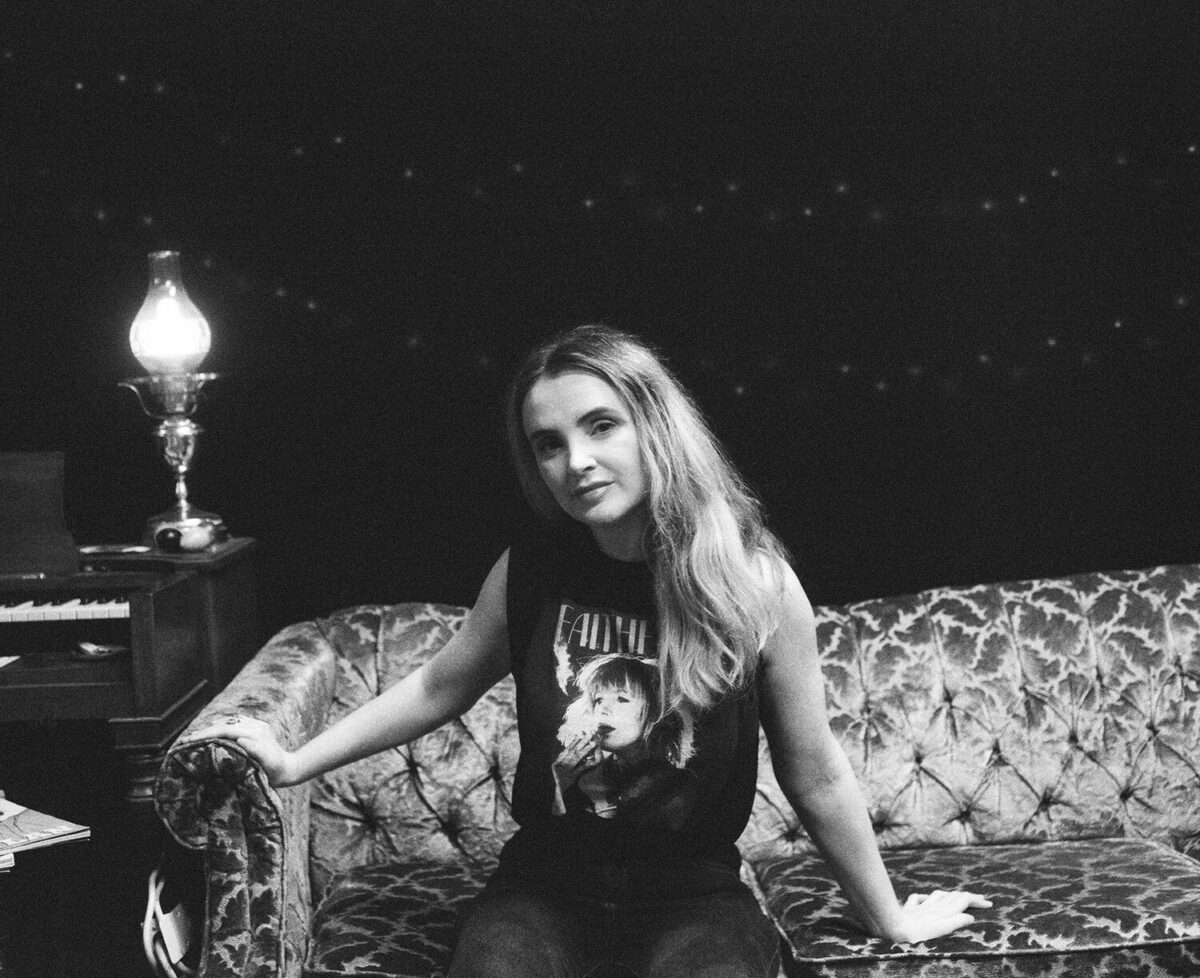
I’m partial to his semi-country era in the late ’60s, you know, but again kind of like you said — it really depends on what Dylan you’re listening to a lot at that moment. Like, ‘oh this is the Dylan’ and next week it could be something different.
Yeah! I spent a bit of time listening to pretty early Bob Dylan last year, and there are songs that I find now that he wrote as a very young man quite devastating. Like, when I was a younger woman I listened to “Times They Are A Changin’” and was like, ‘Cool. Hippies.’ Now I listen to that song and I just find it absolutely heartbreaking. It just sounds like one of the saddest songs written ever and it makes me cry. He’s just a brilliant craftsman. They don’t make many, if any, like Bob Dylan. He’s the one.
Dylan’s three Frank Sinatra cover records — Shadows in the Night, Fallen Angels, and Triplicate —have kind of a similar feeling to what you achieve in Blonde On the Tracks with interpreting somebody else’s work. Those records also led him to Rough and Rowdy Ways, where he really found his own voice in a new way after reimagining those Sinatra songs. Do you think that reimagining Dylan songs has helped you in a similar way as you embark on your next solo project?
Oh, absolutely. I was completely ripping Bob Dylan off by doing a cover record of [a single artist]. I recorded the album in the year that his first Sinatra record came out, and I was kind of teaching myself how to sing again through his songs because he is such a master of phrasing. I think that he’s singing so beautifully on Rough and Rowdy Ways because he did those Sinatra records. When I was a young girl getting singing lessons, I was singing those songs too, so I found that quite beautiful to hear Bob Dylan singing those songs and going back to those standards. I felt a real connection with him in that moment.
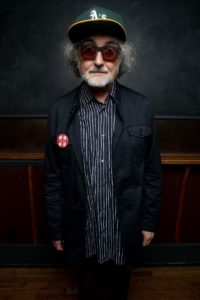
You’ve now played with Al Kooper, you know other musicians who have played in Dylan’s various bands, and have come into contact through your work with a lot of people in that broader network. How have you grappled with becoming a pretty prominent figure within the Dylan community and finding your own way through the middle of it?
Oh god, I don’t think of myself as prominent (laughs). I think of myself as a footnote in the Dylan community, but I think, as musicians, we are always fans first, and what I love about being part of the Dylan community is sharing that intense fandom with other people. It’s a great reminder and it’s very pure about what it is that music does for us as human beings. It’s a great connector so I’ve really loved that. Particularly because I put out the Dylan record at a time when I wasn’t leaving the house, the fact that I was able to interact with people online of all ages who were enthusiastic, passionate, and emotionally invested in Bob Dylan’s work, that really brought me so much joy. People diss Twitter and say it’s just full of hate. If I’m having a shitty day, I can just go onto Dylan Twitter and be like, ‘Yes! Here I am with my people! Look at these memes, they’re perfect! Look at these nerds geeking out about stuff!’ It’s a really lovely community of people with a very specific interest, which is kind of what the internet is great at in an age where we are very much questioning whether the internet is the decline of civilization. The peak internet for me is connecting with all these brilliant minds about our mutual love of Bob Dylan. That’s wonderful. As for other musicians, what has blown me away about music is really how small the world is once you start playing music (laughs). That’s both beautiful and also terrifying because it’s like, ‘Don’t fuck it up, kid!’ Particularly when I moved to Nashville, I kind of knew I was going deep into the heart of that very professional music zone, but it’s a great and intimidating place to be.
Social media, like you said, can be such an incredible tool, such an incredible community, but definitely as an artist I’m sure has some drawbacks as well. How do you approach interacting in a virtual space like this and using it most effectively to connect and share your art even with some of these drawbacks?
I think the best thing that I’ve learned about it is to not be afraid to dip out. I think musicians are under enormous pressure to be online all the time and to create content, content, content. But I think as a human being, I am not a content machine. I am an artist, and I have friends, and family, and pets, and a life, and sometimes I don’t have anything to say and that’s OK. So much about being involved in art is observing things and it’s very hard to observe if you feel like you’ve also got to be like, ‘Hey, look at me!’ (Laughs)
I definitely use Twitter more because I love words and I am very comfortable in the world of words and I’m less comfortable in the world of wearing a bikini so I don’t use Instagram as much. Even though Instagram is a great place to share animations, and to share videos, and do all of that. Everybody, no matter what industry they’re in, is in that zone of, ‘Oh god, how much do I need to be here, how much do I want to be here? What is the sweet spot?’ and none of us know because none of it has really existed long enough for us to know.
To that end, you also run your own record label, Tiny Ghost. What are some of the unique challenges of running the business end of your own label while you’re also creating music? I know you’ve talked a lot about focusing on a physical media strategy versus streaming, so how does that fit into your mission and plan with Tiny Ghost?
Tiny Ghost is so 1990s (laughs). It’s almost as though streaming never happened and it’s an afterthought, but my goal is always to reward the people who want to pay for the music first and then let the music find its broader audience through streaming afterward. But I’m just not interested in giving tech billionaires the first access to my music. I don’t think that is in the best interests of me or my label. Which is not to say I don’t think streaming has its place. It’s a great discovery tool, but I don’t think it should be the first place necessarily, especially, as someone who independently funds all of their albums. It would be great if I could recoup the costs of my record before I let everyone have it for free.
So as far as unique challenges though, it’s very much the part of my brain that runs the business is so different from the dreamy, poetic side of my being, and it’s not easy for me to have both going at the same time. Though I love both sides, you know, I contain multitudes. I love running the shop, I love being across all of that, but that person is not going to sit down and strum a guitar for four hours and see what comes up. That person is like, married — I’m married to my laptop when I’m Tiny Ghost. But I like those things because I do like the nuts and bolts of it. I like getting underneath the car, I want to know how it works. I’m not the sort of person who would want to give an album to a record label and then just be like, ‘Oh, I guess it didn’t work out.’ I like knowing how it all fits together.
Our last question is probably the most important: How are Tubby and Ringo doing?
Oh, that is totally the most important! They’re amazing. So they both got vaccinated today and they’re wonderful. I mean, they both sleep in my bed at night and Tubby’s a really intense little guy. I mean he just comes right up and sleeps on my chest and is very like [calm snoring noises]. But Ringo is chubbier and he looks like a little boulder and he sleeps on my brain. I listen to these podcasts at night. I’m obsessed with Jungian therapy podcasts (laughs) that’s like a very specific thing that I’m into to go to sleep. So I’ll be listening to this show, This Jungian Life, that has these three Jungian analysts talking about different archetypes and things, and I get into this zone of being really chill and very relaxed and that is the moment that Ringo pounces onto the bed and onto the pillow and he can tell that I’m just about to drift off and he starts purring and it’s like he also loves the podcast, but he also wants to seep into my dreams (laughs).
They’re beautiful cats. I got a dog for my birthday last year and they’re… there’s some family conflict. We have some issues, but we’re getting there.
Purchase Blonde on the Tracks on Emma Swift’s Bandcamp page
Visit Tiny Ghost Records’ website
Stay up to date with all things Split Tooth Media and follow Breanna on Twitter
(Split Tooth may earn a commission from purchases made through affiliate links on our site.)

